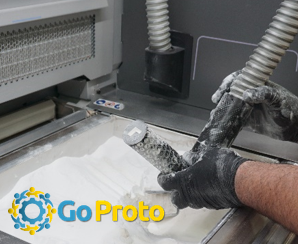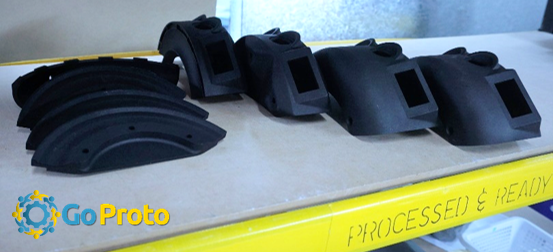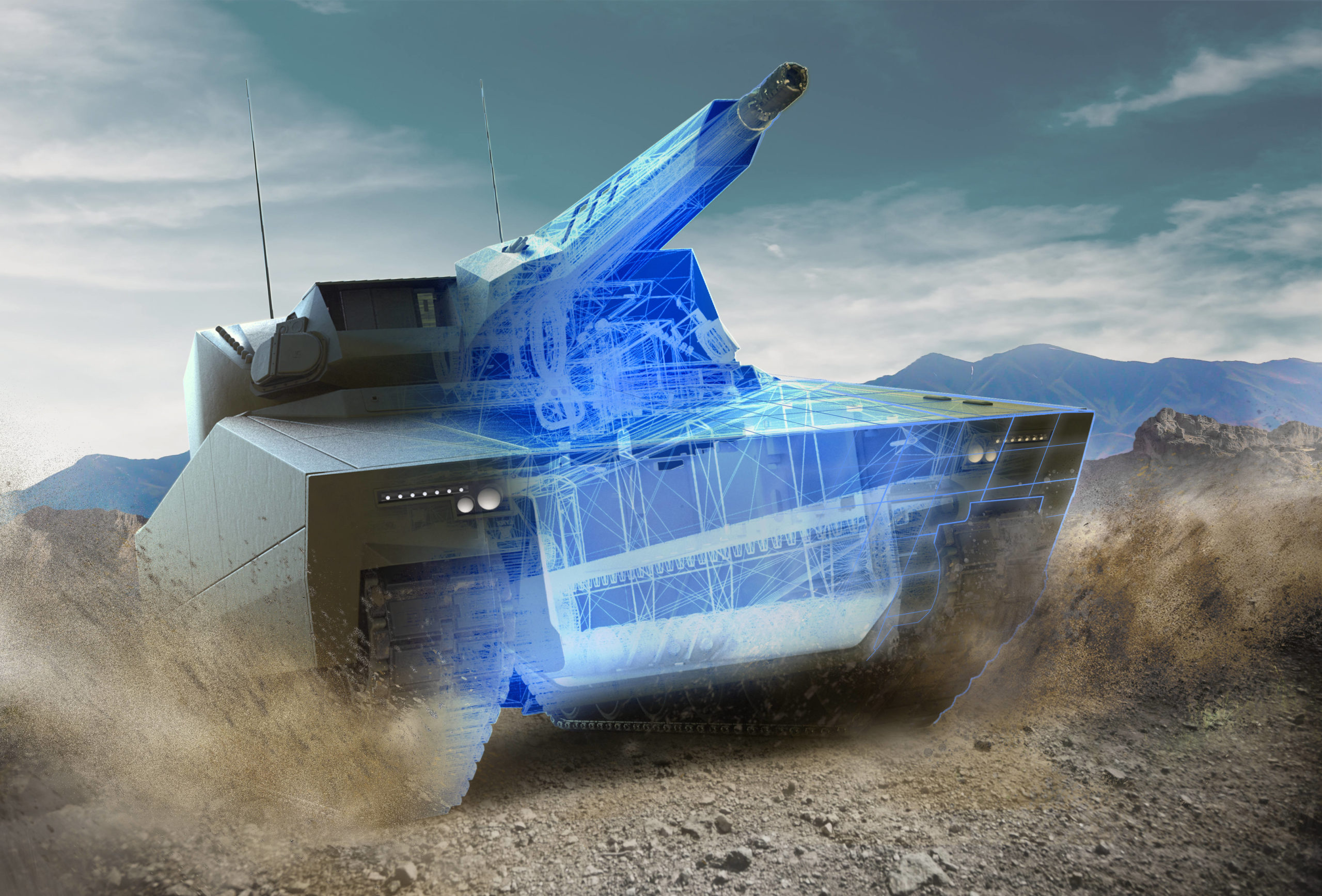Australian rapid manufacturing provider GoProto delivered locally 3D printed dismount communication components for next-generation combat vehicles to Rheinmetall Defence Australia (RDA), a subsidiary of German technology firm Rheinmetall. GoProto is the first Melbourne-based 3D printing provider to work with RDA and provide critical products for its Lynx KF41 infantry fighting vehicle (IFV), demonstrating what the 3D printing service provider calls a “viable in-country solution” in advanced manufacturing for sovereign industrial capability.
Through a successful collaboration with RDA’s Team Lynx, GoProto made design prototypes for innovative solutions using a range of digital technologies. Ultimately, they utilized HP’s MultiJet Fusion technology to create a range of functional polymer (PA12) components with properties that “could rival injection molding.” Among the delivered components were handles and communications panels. Once effective, the communication system would allow soldiers to rapidly dismount from the Lynx fighting vehicle.
GoProto Managing Director Simon Marriott said the company’s 3D printing technology allowed quick, clear, and efficient communication surrounding the design of the vehicle connectivity package. Even though the teams were juggling work from home due to pandemic-related lockdowns in 2020, Marriott said they responded quickly to any design challenges, offering a range of prototypes with full production functionality to the Rheinmetall team.
As a result, RDA embarked on an extensive user testing analysis to select the best solution among three rugged yet lightweight communications panels for soldiers’ rapid dismounting within the vehicles. To provide Australia a warfighting edge, the technological evolution and innovation in land combat and protected vehicle capability are essential. Moreover, the design changes proposed in the 3D printed components aim to improve the soldier’s capability for integration, networking, and communications.
Rheinmetall’s Lynx KF41 IFV was selected by Australia to compete for an AUD18 billion ($14 billion) LAND 400 Phase 3 program. Aiming to recapitalize the Australian Army’s Vietnam-era M113 Armoured Personnel Carrier (APC) force, with an advanced, world-class IFV capability, the multibillion-dollar program will provide new levels of protection, firepower, and mobility to its soldiers. For the past several months, two bidding companies, Rheinmetall with the Lynx and South Korea’s security firm Hanwha with the Redback, have competed to train uniformed Australian personnel in the IFVs’ operation and support.
Ideal for close combat, the next generation tracked, networked, and highly protected IFV, Lynx KF41, is positioned to enter service in 2026, with an inherent growth capacity that extends its capabilities through its 40-plus year life, according to RDA. In 2019, the company revealed that the design and manufacture of the Lynx would also require a strong national industrial network of Australian small and mid-sized enterprises (SMEs). Local industry is vital to the success of the LAND 400 Phase 3 project, which is already creating opportunities for a diverse range of local startups, like GoProto.
On November 10, 2020, Rheinmetall unveiled the first of three Lynx KF41 IFVs designed, developed, and manufactured for the program. Recently, the billion-dollar competition has entered its most critical phase, as both companies have now handed over three vehicles each to the army. During the Risk Mitigation Activity (RMA), the six vehicles will be extensively tested in various harsh environments, from deserts to the tropics. One from each supplier will be blast tested to the point of destruction to find out how tough they really are.
Once this phase ends, the government will choose the winner of the LAND 400 contract in 2022, which could, in fact, bring in up to AUD 27 billion ($21 billion). Considered by far as the most expensive in Australian army history, the contract will provide up to 450 combat fighters capable of carrying between six and eight fully armed soldiers each. If successful, the Lynx fleet will be manufactured in Queensland at Rheinmetall’s new Military Vehicle Centre of Excellence (MILVEHCOE).
Rheinmetall has already created high technology enduring jobs for hundreds of Australians by localizing design and manufacturing expertise in electro-optics, weapon systems, fire control and sensor systems, turret manufacturing, variant design and manufacture, integration, armor systems, simulation, training, and fleet sustainment. Additionally, the signing of a joint venture agreement worth over two billion Euros to supply the Hungarian Armed Forces with 218 Lynx infantry fighting vehicles also means Australian SMEs like GoProto, will see future potential export opportunities.
On the back of the Land 400 Phase 3 roadshow for the country’s acquisition of up to 450 IFVs, GoProto’s successful work with Rheinmetall has allowed the company to use new manufacturing capabilities and expertise to scale up its AM production capacity and build up the local workforce. GoProto aspires to be a leader in the delivery of AM components for the local and global defense industry.
Subscribe to Our Email Newsletter
Stay up-to-date on all the latest news from the 3D printing industry and receive information and offers from third party vendors.
Print Services
Upload your 3D Models and get them printed quickly and efficiently.
You May Also Like
Consolidation in AM: How 2025 Is Shaping the Industry’s New Normal
The first half of 2025 has been marked by a clear shift in the additive manufacturing (AM) industry. Companies are no longer just focused on developing new tech by themselves....
Etsy Design Rule Change Reduces Selection of 3D Printed Goods
Online marketplace Etsy has implemented a rule change requiring all 3D printed goods on the site to be original designs. The update to the site’s Creativity Standards states, ¨Items produced using...
U.S. Congress Calls Out 3D Printing in Proposal for Commercial Reserve Manufacturing Network
Last week, the U.S. House of Representatives’ Appropriations Committee moved the FY 2026 defense bill forward to the House floor. Included in the legislation is a $131 million proposal for...
Transforming From Tourist to Native: Duro CEO Michael Corr Explains Why the Company Rebuilt its PLM Software on AI
In these early innings of the AI boom, many market analysts have expressed concern that AI spend has gotten too far ahead of the technology’s proven ability to deliver significant...



































